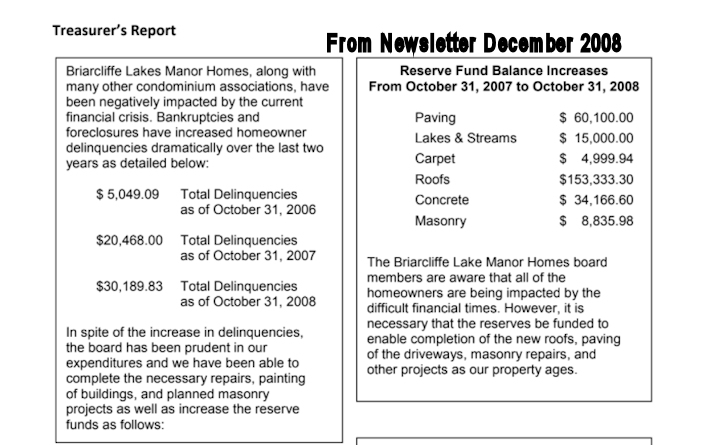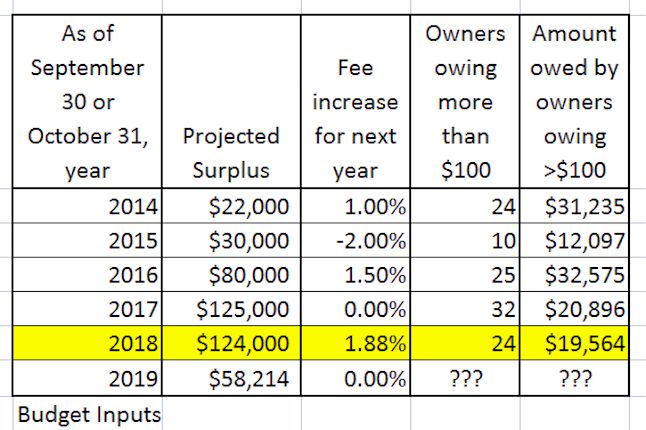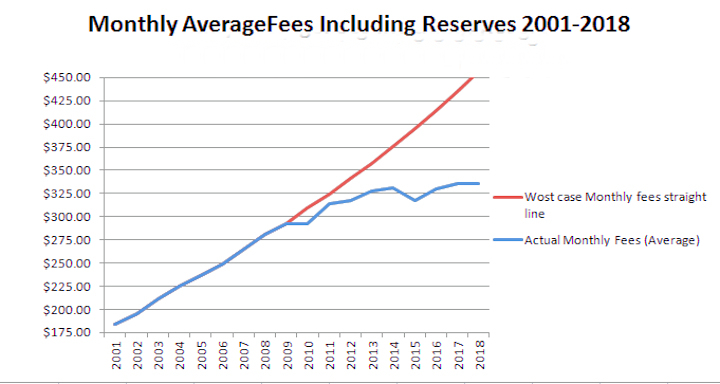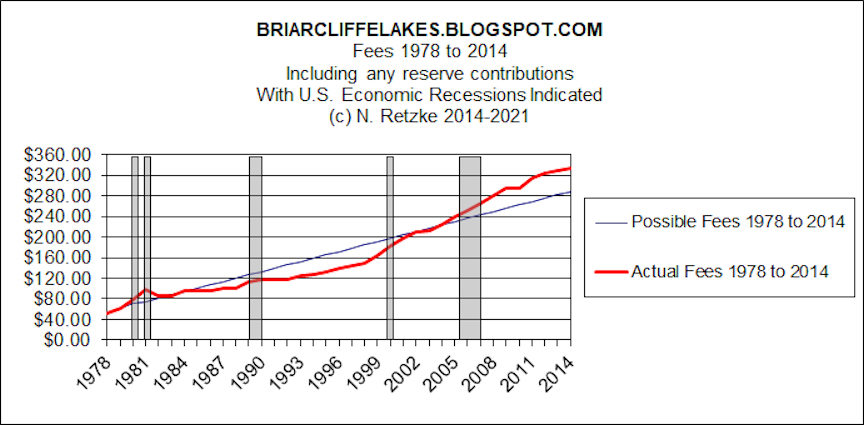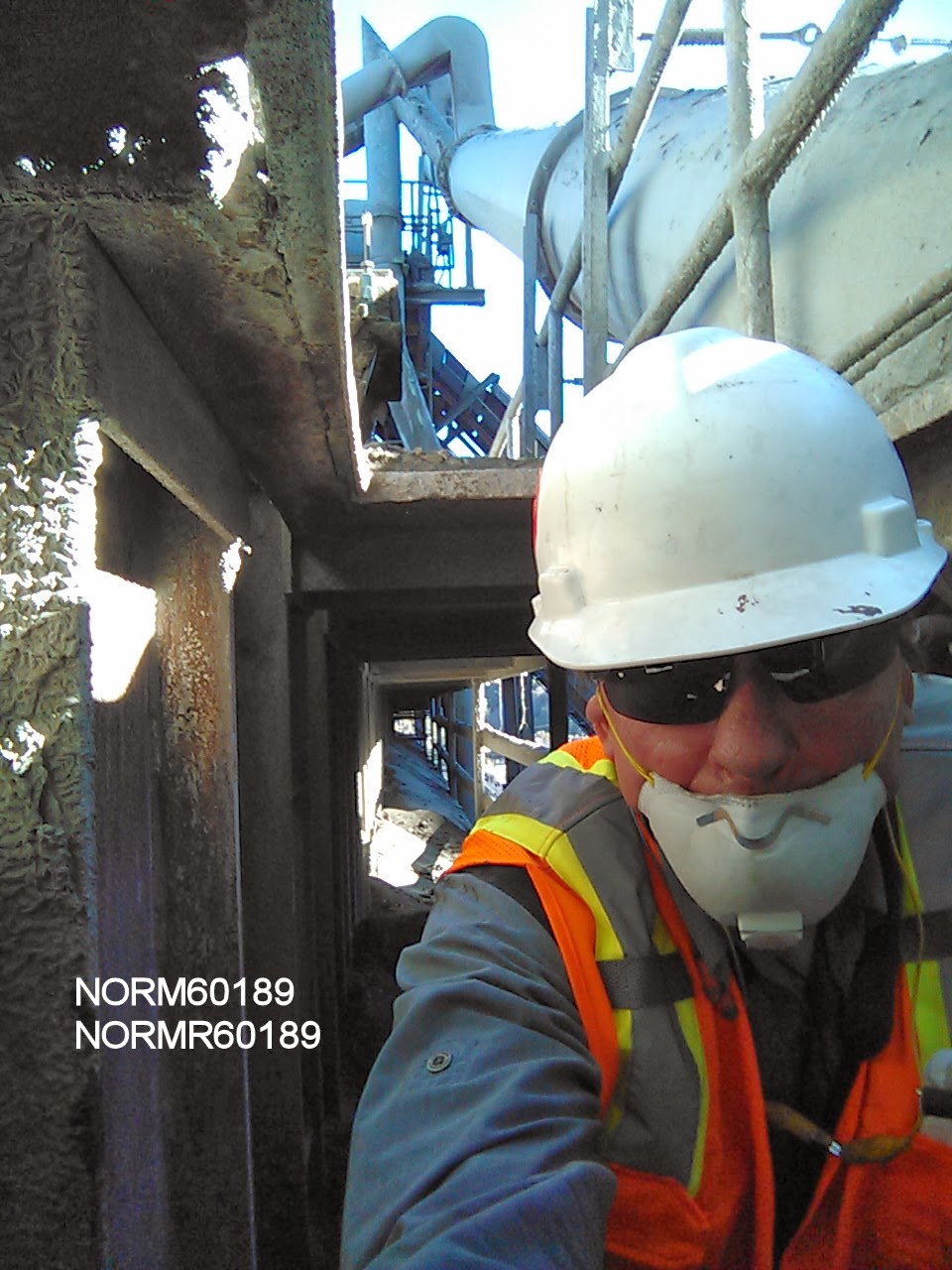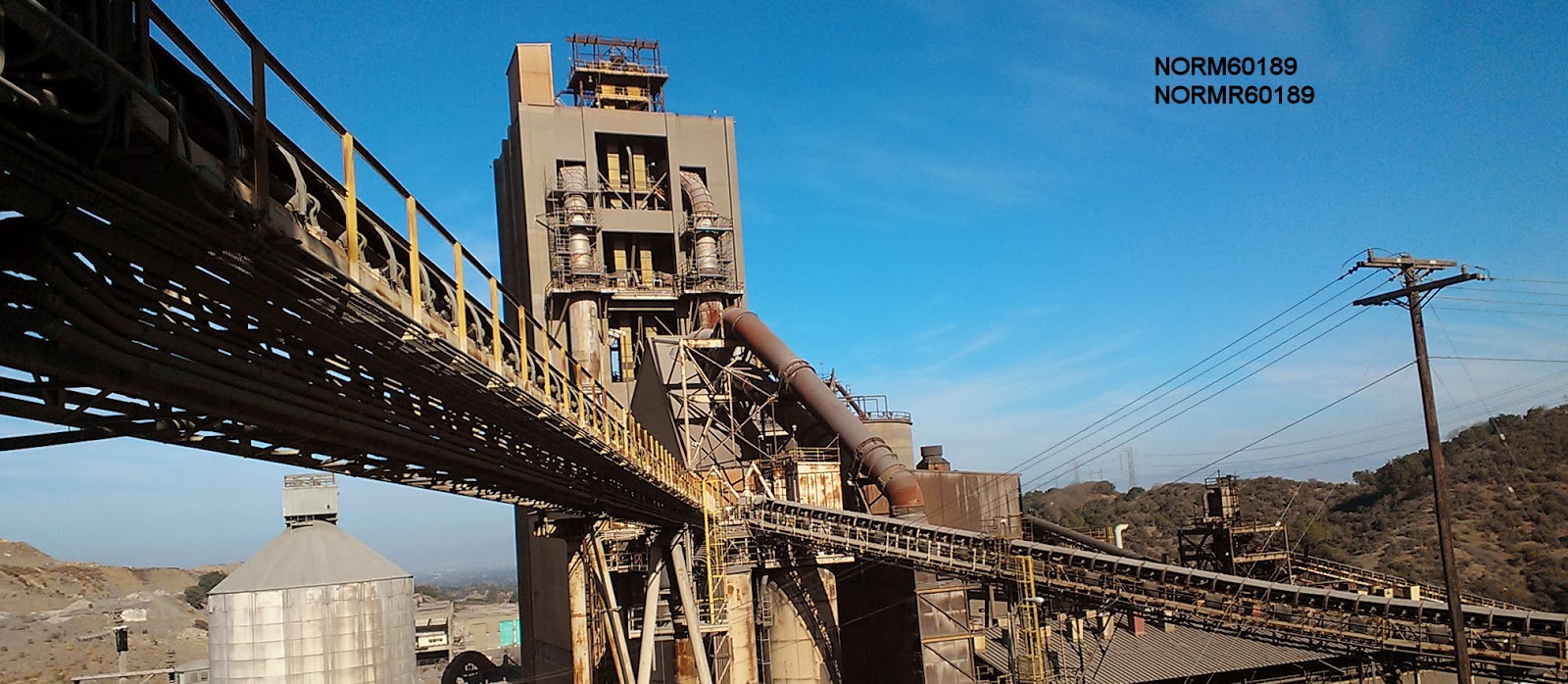Here's another communication on budgets taken from my archives. I sent this to the president of the association on January 29, 2010. The subject was "Comments and observations on the budget" which was the budget that had been sent to owners such as myself.
It includes my opinion of the situation with Lakecliffe Drive. I had been very vocal in presenting my opinion that there was evidence this street would fail prematurely. This email was one in a series of my articulation of the problems with this street. I had numerous conversations about this as an owner and not only at HOA meetings but also with various members of the board, management and a former Architectural Director. I was also of the opinion that the near term costs of this street, the roofing project and driveways would counter the prevailing argument and beliefs of some owners including board members that "Our fees are unnecessarily high." The numbers and my personal projections, made with the public information of the association had indicated that it would be necessary to either reduce expenditures via something like an "austerity program" or simply build budget shortfalls. A consequence of shortfalls would be an inability to complete these projects or there would be the necessity of special assessments. A board member questioned my conclusions and asked "Where do you get your inside information?" All of my information was in the public domain and published by the HOA or gleaned from my notes takes during the open session of the HOA meetings, which I attended regularly.
On the subject of Lakecliffe Drive, no one can ever say I didn't tell them so. As I frequently state, my crystal ball isn't perfect and so I am cautious about making predictions. In 2008 I was comfortable with my analysis because of the visible evidence. With annual patching the street has survived for four years beyond the January email. Replacement will begin 6 years earlier than the earliest predicted date used by our boards and management.
Interestingly, the July 1, 2010 "Reserve Study and Analysis" commissioned by the board at the time indicated that the condition of the streets was "good" and with an "Effective useful life" of 20 years. Using the most recent repaving date, the streets allegedly had a remaining useful life of 10 years with replacement not to occur until 2021-2022, with recommended maintenance every 5 years. That expert dropped the ball or told the board what they wanted to hear. You can choose. For its part, the board at the time expended no funds on street maintenance, although none had been done for 10 years but was recommended at 5 year intervals. At this time, some sections of the street are beyond salvage and spending money to repair rather than replace would not be a good use of association funds.
The estimated cost to replace the streets in the HOA? Oh, about a half-million dollars. Let's assume we can nurse some of these streets for another 5 years. If so the cost to owners for early failure? About $125,000. That would require an additional reserve contribution of about $25,000 per year, or $78 higher annual fees for each owner. These problems do add up. The good news? The association does have current reserves for asphalt.
Armed with the same public information I had in the fall of 2009 as well as my additional analysis of the street and the budgets the board voted for a 0% fee increase, as I recall. The highlights in the following are mine. At the time I wrote the email I did not have the data of the reserve study. The guesstimate for the replacement of the failing section (Lakecliffe from Salisbury to Briarcliffe) was entirely mine. I assumed that 90% of the curbs were okay, but that the asphalt and base would have to be removed and replaced.
"January 29, 2010
Hi [Madam President]:
Hi [Madam President]:
Regarding the resale information, a local Realtor provides me with this information on an annual basis. I’ll forward it to you, as it may save you some time.
On the finances at BLMH, the budgetary spreadsheet indicates that certain “Building Maintenance” items were greater than budgeted in 2009. It was my understanding that funds were expended as part of the roofing and driveway projects, i.e. additional concrete, relocation of gutters, addition of “eyebrow” at entrances, special landscaping to accommodate the drives and gutters, etc. The funds expended for these items were to have been allocated against reserves. Are they actually in “Building Maintenance” for “2009 Actual”? If they are, then the amount for “Building Maintenance” is overstated. Wouldn’t it be better to have a separate category for “annual reserve expenditures”. These are extraordinary and are not a part of annual maintenance. If they are included in ‘maintenance’ the expenditures skew the data, and imply maintenance is higher than it actually is.
As you might be aware, this association has a history of underfunding reserves. I am referring to the entire history of this association. For the period 1978 until roughly 2000 the amounts added annually to reserves were [in my opinion] inadequate. I’ve done studies of this, and have sent letters to management and the board as well as posted on my blog. With the retention of [a new management company in 1998], the board of managers was made aware of this very serious problem and began ramping up reserves in 2000. I have been a unit owner for about 10 years and I am very well acquainted with this problem. Reserves at the time of my purchase were about $300 per unit. To put this in perspective, we are today collecting fees of $330,000 annually for reserves, or $982 per unit. This association presently collects three times more each year than it had managed to accumulate [at the end of] the 20 years prior to 2000!
Here is a link to a website article which includes both some information about “fiduciary duties” as they apply to the board of this association, which is another problem area. It includes a graphic detailing the shortfall in reserves, which accumulated during the period 1983 to 1998. It’s about $1.3 million dollars! Unit owners today are paying higher fees because this association is making up this shortfall. The fee shortfall “peaked” in 2000 and turned around. The association “caught up” and began pulling ahead in 2009. This is shown on the second graph on the website article. The link to the site is:
New Window> http://tinyurl.com/ykbn9wh
If you are interested in more information on the association fee history, go to:
New Window> http://tinyurl.com/yb8rqbt
I have another post and this provides more details of how this association achieved this extraordinary shortfall:
New Window> http://tinyurl.com/yb5re8f
Finally, I have posted several articles on the topic of “Reserves” for this association. They are all here: [Note: the following link will open a complete series of posts on a specific topic. Scroll down to see the earlier posts]:
As you know, there are two areas of finances in the
budget. These are 1) Annual maintenance and operations and 2) Reserves. The
proposed budget will hold these constant. That means that certain repairs may
not be accomplished when necessary as the reserves may not be available. To hold
fees constant means either reducing the amount expended for annual operations
and maintenance, or reducing the amount for reserves. There are no alternatives.
Does this board have the intention to investigate methods to reduce common area
maintenance? Items for “grounds” and “trees” are $182,000.
It is my understanding that “sealcoating” is in
question. These funds could be applied to work for the preservation of
Lakecliffe. There is a serious problem with that street and it is deteriorating
rapidly. If steps are not take to reverse this trend, the association may be
faced with an expenditure in excess of $100,000 dollars over the next 5 years.
Finally, I was disappointed to see no forward projection
for the roofing and driveway projects. We know the cost per roof and we know the
cost per square foot of driveway. Of course, these may change but they are good
starting points. The association should know the expenditure year by year to
replace these in a timely manner. Why was this not included in the budget
information?
Thank you."
